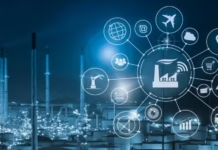Pakistan’s economy is gradually stabilizing, showing signs of measured growth after several challenging fiscal years. The World Bank’s latest Pakistan Development Update projects GDP growth to reach 2.7% in the fiscal year ending June 2025, up from 2.5% in FY24, reflecting modest yet meaningful recovery.
The stabilization stems from tight macroeconomic policies, improved fiscal discipline, and efforts to manage the current account. Pakistan recorded both primary fiscal and current account surpluses, signaling a controlled and forward-looking economic management strategy.
Consumption and Investment Drive Growth Amid Declining Inflation
With headline inflation trending downward, consumer purchasing power is recovering, bolstering domestic demand. Simultaneously, business sentiment has improved, due to greater financial stability and access to financing at more favorable terms.
The reduction in policy rates by the State Bank of Pakistan (SBP) has facilitated credit flow to the private sector. This monetary easing is expected to further catalyze investment, particularly in consumer-facing industries and services.
Despite the positive macroeconomic trend, the agriculture sector exhibited limited growth. Factors such as adverse weather events and pest infestations constrained output, especially in key crops like cotton and wheat.
With a significant portion of the population dependent on agriculture for livelihood, its recovery is essential for rural income growth and food security. Strategic interventions in agri-tech, climate-smart practices, and market access are needed to transform this sector.
The industrial sector witnessed a contraction due to higher input costs, rising energy prices, and increased tax burdens. Additionally, cuts in government development spending further constrained industrial performance.
While the macroeconomic indicators reflect early signs of recovery, employment generation remains a significant challenge. With a rapidly growing population, the economy needs sustained high growth to absorb new labor market entrants and reduce poverty levels.
Inclusive growth policies, such as vocational training, entrepreneurship support, and gender-focused employment strategies, are crucial to address these gaps.
The Role of Digital Transformation in Economic Revival
One of the most promising avenues for inclusive growth lies in the digital transformation of Pakistan’s economy. The country is making notable strides through its Digital Public Infrastructure (DPI) initiatives.
These include digital ID systems, electronic payment gateways, and public service portals designed to improve efficiency and transparency.
However, accessibility gaps remain, especially in rural and underserved regions. Addressing these issues by lowering access costs and upgrading infrastructure will unlock vast economic potential.
Furthermore, digital services can empower small businesses, enable e-commerce, and improve government-citizen interactions. Pakistan’s digital economy can be a powerful equalizer—reducing regional disparities, increasing productivity, and creating new employment avenues.
The success of structural reforms and digital transformation depends heavily on political will and institutional coordination. A shared reform vision among federal, provincial, and local governments, supported by the private sector and civil society, is essential.
Strong leadership, transparent governance, and stakeholder engagement will determine how effectively the nation leverages its current stabilization to build a robust economic future.




